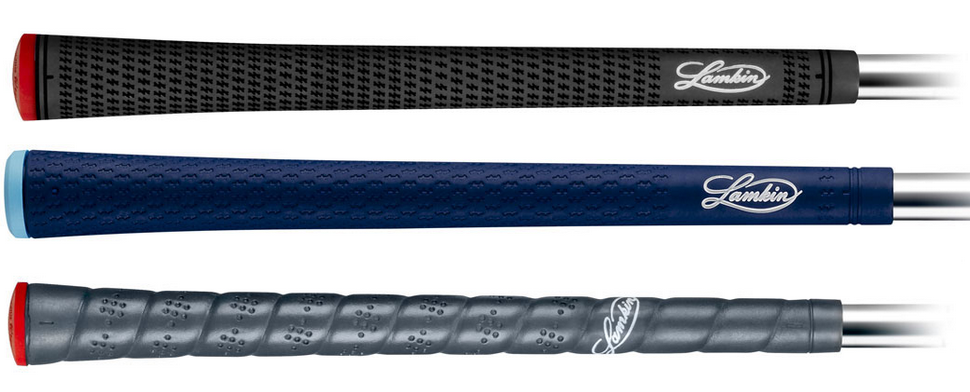As golfers, we know that the little things add up — and I’m not just talking about our scores. From the angle of the clubface to the timing of your swing, every little detail has an impact on your game.
Yet, one of the most commonly overlooked aspects of golf maintenance is grip replacement. Sure, it’s all good and well replacing our clubs every few years, but how often should we change the grips themselves?
Let’s dig into the details of when — and why — you should regrip your golf clubs, ensuring that you’re not compromising your game for something as simple as an old rubber handle.
The general rule: Regrip your golf clubs every 12-18 months
The general advice is that you should regrip your golf clubs at least once a year, but this isn’t set in stone. A more precise benchmark is about every 30-40 rounds, or every 12 to 18 months if you’re a casual golfer. This estimate considers regular wear and tear from play as well as environmental factors like heat and moisture.
However, several variables can impact how quickly your grips wear out, from how often you play to the conditions in which you play. For example, if you’re playing 2-3 times a week or practising regularly, your grips may need replacing more often than those who play on the occasional weekend. Tour pros replace their grips every 6 weeks to 2 months, but unless you’re on the PGA or DP World Tour, you shouldn’t need to worry about changing them that frequently.
Signs that it’s time for new grips
If you’re not sure how to recognise when your grips are ready for a change, you can look for some of the tell-tale signs.
Slick or glossy feel: If your grips feel slippery, it’s time to replace them. A slick grip can cause your hands to slip during the swing, which can affect the angle of the club face on impact. A slippery grip can also cause you to overcompensate and grip the club tighter to prevent movement, creating unwanted muscle tension.
Harder grip texture: Over time, grips lose their soft feel and become firmer than they should be, making the grip less comfortable in your hands.
Cosmetic wear: If you notice the paint on your grips starting to fade or chip away, this is a visual cue that it’s time to change.
Crumbling rubber or cord: If parts of the grip material are literally falling apart, you’re well overdue for a replacement.
Key factors affecting grip longevity
While the 12-18-month rule is a good baseline, several other factors can play a part in how often you should change your grips.
1. Frequency of play
If you’re playing more than 40 rounds a year or hitting the range several times a week, your grips will wear down faster.
One practice session can have the same effect on your grips as a full round, so even casual range time should be factored into your grip maintenance schedule.
2. Weather conditions
Persistent humid or wet conditions can cause grips to deteriorate as a result of them absorbing moisture and drying out.
On the other hand, playing in dry climates can help your grips last longer — which excludes everyone from Great Britain & Ireland. The only downside of this is that they can become hard and brittle over time.
3. Grip care and maintenance
Properly cleaning your grips can extend their lifespan, but that’s not to say they’ll last forever. Dirt, sweat, and oils from your hands accumulate on the surface, affecting both grip performance and longevity. If you want to get the most out of your grips before replacing them, you can follow these tips.
- After every few rounds, wipe your grips with a damp microfiber cloth to remove dirt and grime.
- Once a month, use soapy water and a soft-bristle toothbrush for a deeper clean. However, don’t go overboard with harsh chemicals or too much soap, as they can degrade the grip material.
- After cleaning or wiping your grips down, pat the grips dry rather than rubbing them to prevent premature wear.
Why it’s worth the effort
You may be tempted to ignore or delay changing your grips, thinking, “Well, it’s not the end of the world; how much could it really affect my game?” But in reality, that small detail can make a big difference.
Grip wear leads to poor habits: As mentioned above, when your grips become slick or hard, your instinct may be to compensate by gripping the club tighter or, without realising, subconsciously adjusting how you hold the club. This extra tension or change of grip can alter your swing mechanics, leading to inconsistent shots and even hand/finger fatigue during a round.
Confidence in your equipment: Every golfer wants to know their gear is up to par. If you’ve ever swung a club with a fresh set of grips, you know the difference it can make. Everything feels a little more secure, and you trust your swing just that bit extra.
Don’t neglect your grips
In a game where precision is everything, don’t let something as simple as worn-out grips affect your performance. Replacing your golf grips is a simple and relatively cost-effective way to build consistency and stay confident on the course. If you’re ever in doubt, replace them sooner rather than later.



